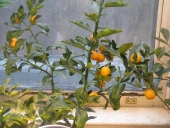




"Limitation is the mother of good management", Michael Evanari
Location: Southwestern Oregon (Jackson County), Zone 7








"Limitation is the mother of good management", Michael Evanari
Location: Southwestern Oregon (Jackson County), Zone 7




Brenda
Bloom where you are planted.
http://restfultrailsfoodforestgarden.blogspot.com/




Brenda Groth wrote:
we have wild strawberries everywhere that do tremendously with very little care
1. my projects
 2
2




The ultimate goal of farming is not the growing of crops, but the cultivation and perfection of human beings. - Masanobu Fukuoka




hubert cumberdale wrote:
i find that in my forest garden the strawberries "roam" around. the most productive areas are not where i planted them years ago.








"Limitation is the mother of good management", Michael Evanari
Location: Southwestern Oregon (Jackson County), Zone 7




K.B. wrote:
Thanks all for the thoughts and photos...
For those of you that have the 'roaming' strawberries, how is the disease issue? Also, can you say what varieties of strawberries you started with that have done the best with the roaming method?

 1
1




permaculture wiki: www.permies.com/permaculture








permaculture wiki: www.permies.com/permaculture




Growing a self sustainable home for ourselves us and future generations...




permaculture wiki: www.permies.com/permaculture




"Limitation is the mother of good management", Michael Evanari
Location: Southwestern Oregon (Jackson County), Zone 7




permaculture wiki: www.permies.com/permaculture




"Limitation is the mother of good management", Michael Evanari
Location: Southwestern Oregon (Jackson County), Zone 7




The ultimate goal of farming is not the growing of crops, but the cultivation and perfection of human beings. - Masanobu Fukuoka




permaculture wiki: www.permies.com/permaculture








"Limitation is the mother of good management", Michael Evanari
Location: Southwestern Oregon (Jackson County), Zone 7









 1
1




"Limitation is the mother of good management", Michael Evanari
Location: Southwestern Oregon (Jackson County), Zone 7
 1
1





|
We can fix it! We just need some baling wire, some WD-40, a bit of duct tape and this tiny ad:
The new kickstarter is now live!
https://www.kickstarter.com/projects/paulwheaton/garden-cards
|







